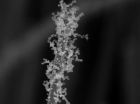(Press-News.org) Environmental vibrations induced by urban railway traffic are mainly generated from uneven wheel–rail contact in the short wavelength range, according to a study in the 4th issue of SCIENCE CHINA Technological Sciences, 2012.
The introduction of urban railways is one of the most effective ways to deal with traffic problems in large cities. However, in the vicinity of railways, day-by-day vibrations from trains may cause discomfort to people, the malfunctioning of sensitive equipment, and even damage to old buildings, and railways therefore have serious environmental problems. The development of urban railways is now limited by such environmental vibrations.
Effective vibration-reduction technologies rely on a good understanding of the excitation source that generates the vibrations. "In recent years, substantial progress has been made in modeling the train–track–ground interaction, and consensus has been reached that the excitation source is the moving of constant loads and uneven contact between wheels and rails," according to background information in the article. "Nevertheless, the contact can hardly be measured directively, so its amplitude and frequency contents are not completely understood, and its quantitative expression remains a problem for further research to address.
Recently, a research group led by Prof. Tao Xiaxin at Harbin Institute of Technology, China, has made a breakthrough in revealing the excitation mechanism. Based on an inversion study in the frequency and wave-number domain, Dr. Wang Futong, a key research member in the group, has found that high-frequency contents are predominant in the excitation. A power spectral density function (PSD) of uneven wheel–rail contact, rather than the track PSD, was suggested to describe the random characteristics of the excitation source. An inversion strategy was then established to obtain the source function from vibration data recorded by an observation array at the ground surface. The wheel–rail unevenness PSD, being the source function for the No. 13 Beijing urban railway, was obtained by the inversion strategy. The result indicated that the source function properly described the track unevenness in the range of wavelengths over 1.2 m, and showed wheel irregularities in the range of wavelengths shorter than 1.2 m.
The researchers found that, in the range of short wavelengths under 1.2 m, the wheel–rail PSD maintained a value higher than the 6th class of the track PSD suggested by the Federal Railway Administration. As urban trains do not travel particularly quickly, this short wavelength range exactly corresponds to the main frequency band of environmental vibrations; i.e., the frequency components of the vibrations stem mainly from that range of uneven excitation. Taking account of only moving constant loads and track unevenness could result in a severe underestimation of the environmental vibrations.
"Whereas the track spectrum reflects only the evenness of the track, the wheel–rail spectrum expresses both the track unevenness and the irregularities of wheels, and it is therefore more suitable to be used as the source function of urban railway traffic," the researchers write. "It is also shown that inversion of the exciting source according to observed ground vibrations is an effective way to detect quantitatively the combined wheel–rail unevenness."
###The research has been supported by the National Natural Scientific Foundation of China, under contract No. 50538030.
For more information, please see the original article.
Wang Futong, Tao Xiaxin, Zheng Xin. Inversion of Excitation Source in Ground Vibration from Urban Railway Traffic. Sci China Tech Sci, 55: 950-959, doi: 10.1007/s11431-011-4665-9
Importance of short-wavelength excitation in environmental vibrations due to urban rail traffic
2012-04-30
ELSE PRESS RELEASES FROM THIS DATE:
Maintain your brain: The secrets to aging success
2012-04-30
Aging may seem unavoidable, but that's not necessarily so when it comes to the brain. So say researchers in the April 27th issue of the Cell Press journal Trends in Cognitive Sciences explaining that it is what you do in old age that matters more when it comes to maintaining a youthful brain not what you did earlier in life.
"Although some memory functions do tend to decline as we get older, several elderly show well preserved functioning and this is related to a well-preserved, youth-like brain," says Lars Nyberg of Umeå University in Sweden.
Education won't save ...
Scientists provide first large-scale estimate of reef shark losses in the Pacific Ocean
2012-04-30
HONOLULU – April 25, 2012 -- Many shark populations have plummeted in the past three decades as a result of excessive harvesting – for their fins, as an incidental catch of fisheries targeting other species, and in recreational fisheries. This is particularly true for oceanic species. However, until now, a lack of data prevented scientists from properly quantifying the status of Pacific reef sharks at a large geographic scale.
In a study published online April 27 in the journal Conservation Biology, an international team of marine scientists provide the first estimates ...
Research shows rats have best bite of rodent world
2012-04-30
Scientists at the University of Liverpool have found that mice and rats have evolved to gnaw with their front teeth and chew with their back teeth more successfully than rodents that 'specialise' in one or other of these biting mechanisms.
Researchers designed a computer model to simulate the bite of rats to understand whether their skull shape or muscle arrangement was a major factor in their evolutionary success and global dominance, making them one of the most common pest species in the world.
Research has already shown that rats and mice can both chew and gnaw, ...
New form of intellectual disability discovered
2012-04-30
(Toronto) - Researchers at the Centre for Addiction and Mental Health (CAMH) led a study discovering a gene for a new form of intellectual disability, as well as how it likely affects cognitive development by disrupting neuron functioning.
CAMH Senior Scientist Dr. John Vincent and his team found a mutation in the gene NSUN2 among three sisters with intellectual disability, a finding to be published in the May issue of the American Journal of Human Genetics.
The discovery was made after mapping genes in a Pakistani family, in which three of seven siblings had intellectual ...
Bejeweled: Nanotech gets boost from nanowire decorations
2012-04-30
Like a lead actress on the red carpet, nanowires—those superstars of nanotechnology—can be enhanced by a little jewelry, too. Not the diamonds and pearls variety, but the sort formed of sinuous chains of metal oxide or noble metal nanoparticles.
Though science has known for some time that such ornamentation can greatly increase the surface area and alter the surface chemistry of nanowires, engineers at Stanford University have found a novel and more effective method of "decorating" nanowires that is simpler and faster than previous techniques. The results of their study ...
When to have kids: A complex question for hazel dormice
2012-04-30
Claudia Bieber from the Research Institute of Wildlife Ecology (FIWI) of the University of Veterinary Medicine, Vienna, and fellow scientists analysed a capture-recapture data set on common dormice (Muscardinus avellanarius) to investigate the life-history strategy of this species. These small rodents are about the size and weight of a wood mouse (Apodemus sylvaticus), but, unlike their rodent cousins, they hibernate – usually from late September/October to April/May. This is reflected in rather different life history strategies: While wood mice may reproduce any time between ...
Polluting China for the sake of economic growth
2012-04-30
China's economic growth will continue to be energy-intensive and highly polluting for the foreseeable future with emissions and efficiency far below capital growth on the agenda, according to a study published in the International Journal of Global Energy Issues.
Economist Yanqing Xia of Dongbei University of Finance and Economics and the Northeast Branch of the Chinese Academy of Sciences in Liaoning has looked at almost a decade's worth of data from 30 Chinese provinces to build a comprehensive model of pollution, energy consumption and economic growth. The model offers ...
Doubling the information from the double helix
2012-04-30
Our genes control many aspects of who we are — from the colour of our hair to our vulnerability to certain diseases — but how are the genes, and consequently the proteins they make themselves controlled?
Researchers have discovered a new group of molecules which control some of the fundamental processes behind memory function and may hold the key to developing new therapies for treating neurodegenerative diseases.
The research, led by academics from the University of Bristol's Schools of Clinical Sciences, Biochemistry and Physiology and Pharmacology and published ...
Deadly decision: Obese drivers are far less likely to buckle up
2012-04-30
BUFFALO, N.Y. -- Obese drivers are far less likely to wear seatbelts than are drivers of normal weight, a new University at Buffalo study has found, a behavior that puts them at greater risk of severe injury or death during motor vehicle crashes.
The UB study found that normal weight drivers are 67 percent more likely to wear a seatbelt than morbidly obese drivers. Drivers were considered overweight or obese if they had a BMI (body mass index) of 25 or more, according to the World Health Organization definition of obesity, with 25-30 defined as overweight, 30-35 slightly ...
Fruit flies provide new knowledge about uninhibited cell growth
2012-04-30
In a new study, scientists at the University of Copenhagen show that a specific type of carbohydrate plays an important role in the intercellular signalling that controls the growth and development of the nervous system. In particular, defects in that carbohydrate may result in the uninhibited cell growth that characterizes the genetic disease neurofibromatosis and certain types of cancer. The results have just been published in the well-reputed journal PNAS.
Scientists from The Faculty of Health and Medical Sciences at the University of Copenhagen have put a special ...

